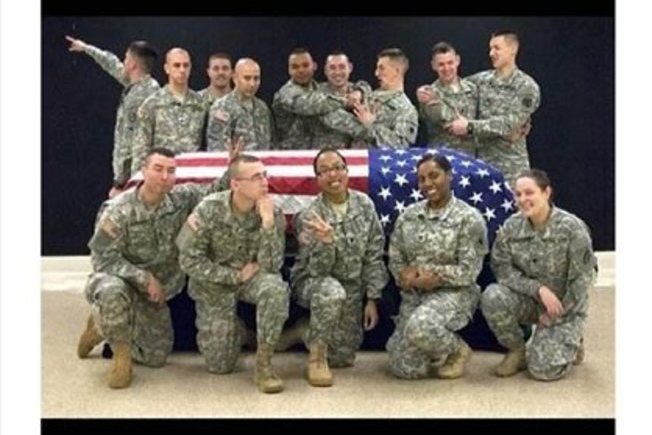As is often the case, we tend to get house calls in the middle of snow storms. And this past week was no different. I plowed out the funeral home’s parking lot, pulled out the pick-up van and we were on our way. We arrived to a packed house where family and friends encircled the deceased in a garrison of grief.
“Direct cremation,” the family said. “That’s what she wanted.” As is our modus operandi we assured them, “Take as long as you need to say your good-byes.” And with that permission, six members of the family proceeded to pull out their cell phones, leaned down and took a photo with the deceased.
Funeral photography, funeral selfies and “corpsies” via mobile devices are becoming more and more normal at death beds and funerals, despite the fact that they’re seen by many as pure sacrilege. The Huffington Post stated that such images are “evidence the apocalypse can’t come soon enough.” And with the boneheaded cadaver selfie and the recent “we put the fun in funeral” military Instagram photo in the news, it’s no wonder The Huffington Post feels the way they do. And let me be clear, the cadaver selfie and the military photo aren’t cool and they aren’t the funeral selfies that I’m defending.
I myself once felt uncomfortable with the idea of deathbed and funeral selfies, but as I’ve seen more and more people take these photos, I’ve slowly become more open. Here’s why:
There’s a long history of funeral photography. Heck, I think there’s a one million year old photo of a dead Homo erectus floating around the internet. There may even be one of dead Jesus somewhere on Reddit. And there are certainly thousands of “odd” and “creepy” post-mortem photographs from the Victorian era.
But, unlike the cadaver selfie or the boneheaded military photo, funeral photography is usually motivated by some kind of love. Intent is part of the issue when talking about funerals and photography, etc. Why do it? What’s the motivation? And although the motivation isn’t always clear, it is clear most take these photos as a token of remembrance. A token of love.
“But isn’t the selfie – by definition – an act of narcissism?” you ask. At first glance, yes. Selfies would seem like the epitome of narcissism, and indeed many are self-serving. But many (most) – especially the ones taken by those who find themselves in the emerging culture of social media – funeral selfies are about both belonging and identity.
Emerging culture has moved from the neatly defined groups/tribes of pluralism to the blending of fragmentation. We are like quilts. We’re like mosaics. With fragmentation, the social rules that come with the strictly defined boundaries of pluralism become less and less important. With fragmentation, belonging and identity become of prime importance. Belonging and identity is decorum.
Social media is how many of us relate to the world. And the selfie plays a part in that relationship. It is a way of saying “this is where I am at. This is what I’m doing. This is who I am. These are my stupid duck lips.” And the funeral selfie is how we say, “This part of my community has died and I just wanted to let you know.” In the minds of many, taking a selfie with the deceased is right because it’s about expressing a connection to the deceased and wanting to share that connection with others. It’s about identity and belonging.
Obviously, though, permission is the thing when it comes to funeral selfies. If you want to take any form of funeral photography, ask first. While you may be a part of emerging culture, it’s likely your parents, grandparents, aunts and uncles are not. They have a sense of decorum that has been molded by a tribal history that you might lack, so ask their permission before you take your photos. And for god’s sake, don’t jump in the casket so you can get “a really good close up”. And, if the deceased has a Facebook or twitter account, it’s probably not good to tag them in your photo.
And just because you have permission to take the photo doesn’t mean you have permission to share the photo on Facebook. Yeah, we love you and we love your grandmother, but when we’re sitting down to eat some meatloaf for dinner we’re not that interested in having your corpsie show up in our Instagram feed.
Since social media is how we — the younger, emerging generation — relates with the world, it will likely be how we relate with death.
So, a funeral selfie isn’t about stupid kids and their narcissistic attempts to express themselves. It’s about how they/we relate with a world that’s being defined more and more by social media, globalization and fragmentation. It’s about belonging and identity.
Caleb Wilde is a funeral director who blogs at Confessions of a Funeral Director.






